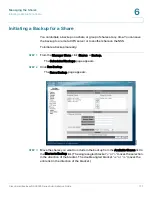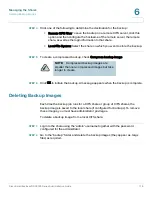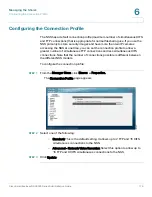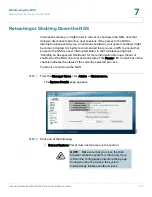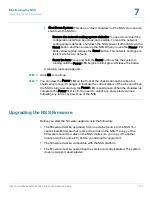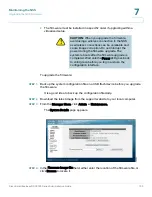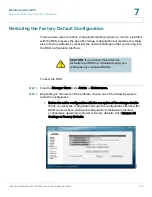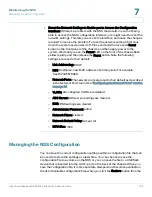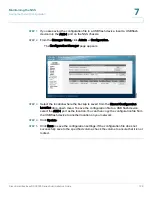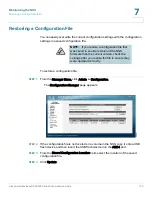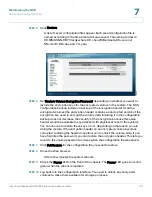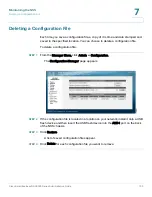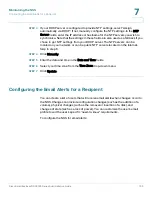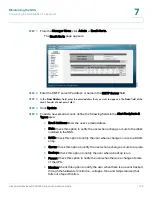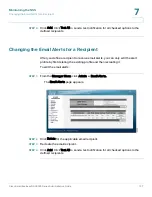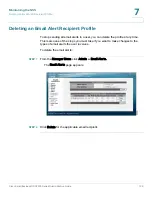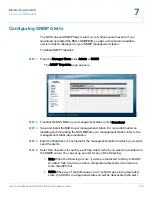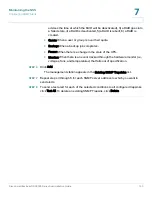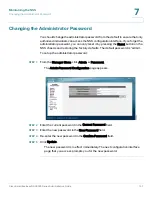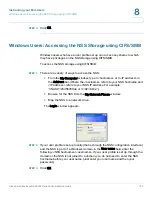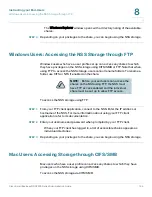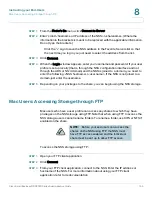
Maintaining the NSS
Restoring a Configuration File
Cisco Small Business NSS2000 Series Administration Guide
131
7
STEP 5
Click Restore.
A list of saved configuration files appear. Each saved configuration file is
named according to the time and date it was saved. The naming format is:
HH.MM.SS.NN.DD.YY.tar.gz where HH = hour, MM=minute, SS=second,
NN=month, DD=day, and YY=year.
STEP 6
Set Restore Volume Encryption Password depending on whether you want to
include the encryption keys for the encrypted volumes in the restore. The NSS
configuration backup includes a backup of the encryption header for all the
encrypted volumes (the encryption header contains an encrypted version of the
encryption key used to encrypt the volume data. Including it in the configuration
backup does not decrease the security of the encryption because this same
header would be available to any attacker with physical access to the system).
You can choose to restore these keys or not, depending on the reason you are
doing the restore. If the encryption header on an encrypted volume becomes
corrupted, restoring the header may allow you to unlock the volume. Also, if you
have forgotten the password, you can restore the encryption header. This lets you
revert to the volume password as it was when the configuration file was saved.
STEP 7
Click Full Restore for the configuration file you want to restore.
STEP 8
Close the Web browser.
After a few minutes the system reboots.
STEP 9
Check the Power LED on the front of the chassis. The Power LED goes to a solid
green when the reboot completes.
STEP 10
Log back into the configuration interface. You need to unlock any encrypted
volumes to make them available for storage purposes.

